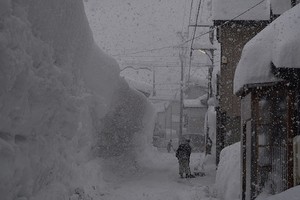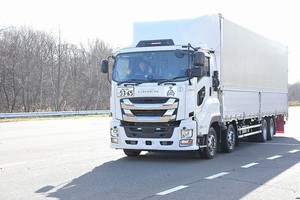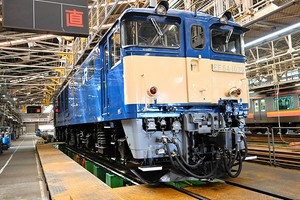THE ASAHI SHIMBUN
April 10, 2021 at 19:00 JST
Recently discovered images of prewar life in Naha not only depict ordinary folk walking the streets barefoot but also offer other tantalizing glimpses of the city before much of it was razed by U.S. fire-bombing on Oct. 10, 1944.
In total, 165 photos were found in the archives of the Osaka headquarters of The Asahi Shimbun.
The rare images also capture distinctive architecture in the Okinawan prefectural capital from the Taisho Era (1912-1926) and early Showa Era (1926-1989) as Naha was in the process of transforming into a modern city along with increased bustle among the local population.

They emerged as Naha prepares to celebrate the centennial of its establishment as a city on May 20.
Masaaki Hokama, a researcher at the Naha City Museum of History, called them “very important” and said the museum was grateful they had been found.
“They show not only people walking in bare feet and women selling fish and vegetables, but new modern architecture,” Hokama added.
Tomoo Kawashima, a professor of modern architectural history at Kyoto Kacho University, said the images offer a unique blending of Western elements with the traditions of the Ryukyu kingdom that became Okinawa Prefecture in 1879 when the Japanese government incorporated the southernmost islands.

Kawashima also noted the mixture of windows in the Western style that opened vertically rather than the sliding ones used traditionally in Japanese homes with red-tiled roofs seen on many Ryukyu kingdom structures that could withstand the heavy rains for which Okinawa is famous.
He was particularly struck by a structure designed in 1919 by the architect Goichi Takeda (1872-1938) in what was known as the Spanish Mission style prominent in the U.S. West Coast at that time. The building would later be used as Naha city hall.
“By combining red tile roofs with arcades, Takeda would go on to design similar structures in the Kansai region,” Kawashima said. “It is such a sad thing that Naha city hall was destroyed in the 1945 Battle of Okinawa.”
(This article was written by Keita Mano, Amane Shimazaki and Okinawa Times staff writer Ari Shiroma.)
* * *
The photos were kept and stored as prints at The Asahi Shimbun. The identities of those who took some of the photos are not known. The Asahi Shimbun may change the photo credits and captions if new information becomes available.




















A peek through the music industry’s curtain at the producers who harnessed social media to help their idols go global.
A series based on diplomatic documents declassified by Japan’s Foreign Ministry
Here is a collection of first-hand accounts by “hibakusha” atomic bomb survivors.
Cooking experts, chefs and others involved in the field of food introduce their special recipes intertwined with their paths in life.
A series about Japanese-Americans and their memories of World War II